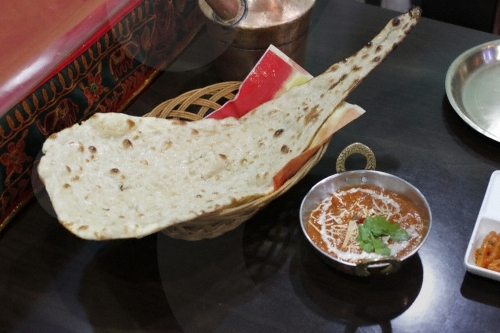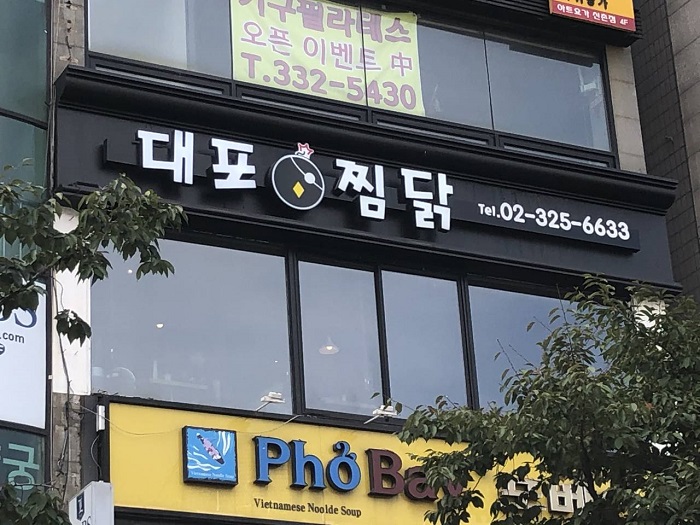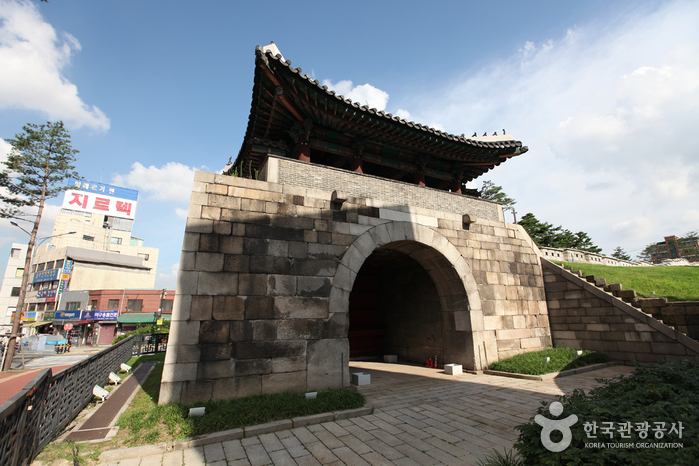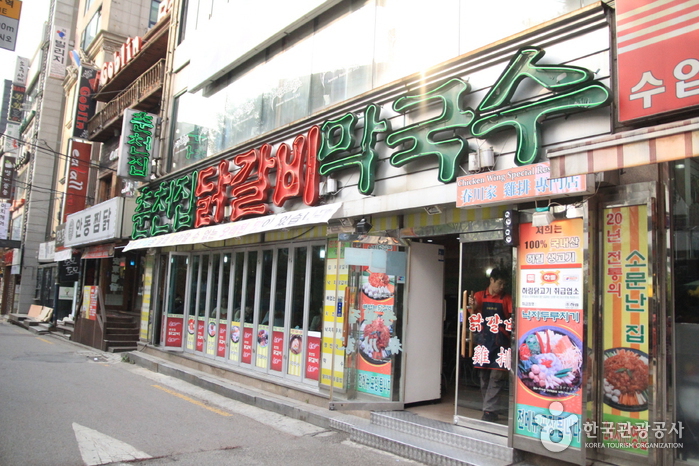Parque Jangchungdan (장충단공원)
3.8Km 2021-07-02
Dongho-ro 261, Jung-gu, Seúl
En noviembre de 1900, el emperador Gojong levanta un pequeño santuario (en el actual territorio donde se encuentra el Hotel Shilla) en memoria de los soldados que lucharon por la protección de la emperatriz Myeongseong (la emperatriz luego muere a manos de mercenarios japoneses). Durante la Guerra de Corea (1950-1953), el lugar fue destruido y solo pudo salvarse una lápida, que fue llevada hasta el parque en 1969.
Everest (에베레스트)
3.8Km 2019-09-02
2-1, Jong-ro 51ga-gil, Jongno-gu, Seoul
+82-2-766-8850
Nepal is located in the southcentral region of the Himalayan Mountains between India and Tibet, accounting for its diverse mixture of both country's cultures. Restaurant Everest allows guests to enter this culturally diverse world by offering cuisine from Nepal, India, and Tibet. In addition, Everest is operated by a Nepali owner, serving affordable food to tourists and students interested in the culture of Nepal. Customers can learn of the traditional food and culture of Nepal while listening to Nepali music and watching movies. The restaurant also provides a seminar area for various meetings.
Daepojjimdak - Sinchon Branch (대포찜닭 신촌)
3.8Km 2021-03-22
27-1, Yonsei-ro, Seodaemun-gu, Seoul
+82-2-325-6633
A place where you can enjoy jjimdak (stewed chicken) with various toppings loved by Koreans. The best menu at this restaurant is braised chicken. This Korean dishes restaurant is located in Seodaemun-gu, Seoul.
Puerta Gwanghuimun (광희문)
3.8Km 2021-02-24
Toegye-ro 344, Jung-gu, Seúl
+82-2-3700-3900
La puerta Gwanghuimun fue construida en el año 1396, durante el 5º año del rey Taejo, en el sureste de la capital (Seúl). Se suele conocer también como puerta Sugumun (puerta del canal de agua) y fue usada como Sigumun, que literalmente significa 'puerta del cadáver', ya que las procesiones funerales pasaban por esta puerta cuando salían por el este.
Durante la Guerra Imjin (invasión japonesa de 1592 a 1598), las puertas de la fortaleza fueron destruidas a tal grado que fue practicamente imposible encontrar el lugar original de su localización. Sin embargo, los esfuerzos de reconstrucción se iniciaron en 1711 (37º año del reinado de Sukjong) y la puerta del canal de agua fue restaurada con forma de torre. Desde ese momento, la puerta quedó intacta, incluso cuando los muros de la fortaleza fueron derrumbados para construir caminos durante la ocupación japonesa, pero la Guerra de Corea la dejó con graves daños y quedó abandonada. En 1975, empezaron los trabajos de reconstrucción para recolocar la puerta Gwanghuimun a 15 metros más al sur de su localización original, que se encontraba en medio de la carretera.
Chuncheonjip Dakgalbi Makguksu (춘천집닭갈비막국수)
3.9Km 2019-12-24
1, Yonsei-ro 5ga-gil, Seodaemun-gu, Seoul
+82-2-325-2361
This Dakgalbi restaurant is located in Sinchon, an area surrounded by universities and populated by students. Chuncheonjip Dakgalbi Makguksu’s most popular dish is Dakgalbi, which is prepared by marinating boneless chicken in spicy red pepper paste and stir-frying it with various ingredients in a large cast iron pan. For an extra tasty treat, try adding an assortment of noodles to the chicken as it cooks. After you’ve finished eating your Dakgalbi, don’t forget to order rice to stir-fry in the pan to soak up the extra, flavorful sauce!
The restaurant offers a simple Dakgalbi menu at an affordable price. Thanks to the restaurant’s delicious food, reasonable prices, and casual atmosphere, the restaurant is always full of people.





 Español
Español
 한국어
한국어 English
English 日本語
日本語 中文(简体)
中文(简体) Deutsch
Deutsch Français
Français Русский
Русский